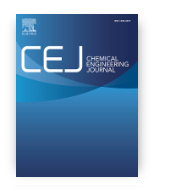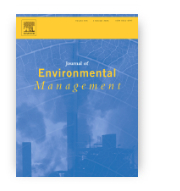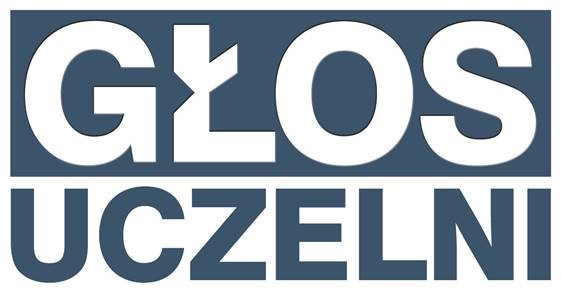
Research papers of the month – February 2024
We present the highest-score research papers of February 2024. These papers have ben published in journals with the highest Ministerial score – 200 points.
Supercritical fluid and cocrystallization technologies for designing antimicrobial food packaging PLA nanocomposite foams loaded with eugenol cocrystals with prolonged release
Adrián Rojas; Dušan Mišić; Irena T. Zizovic; Carol López de Dicastillo; Eliezer Velásquez; Aleksandra Rajewska; Bastián Rozas; Luciano Catalan; Cristian Patiño Vidal; Abel Guarda; María José Galotto
Chemical Engineering Journal
Ministerial score = 200.0
Journal Impact Factor (2023) = 15.1 (Q1)
 Searching for effective strategies to modify the release rate of essential oil derivatives is one of the main challenges in designing prolonged-release antimicrobial food packaging materials. Herein, supercritical fluid technology and cocrystallization engineering were used to develop novel eugenol (EU) prolonged-release poly (lactic acid) (PLA) nanocomposite foams. Eugenol-phenazine (EU-PHE) cocrystals, produced by a solvent-free mechanochemical method, were incorporated by supercritical solvent impregnation (SSI) inside PLA nanocomposite foams with different contents of Cloisite30B® (C30B). The effect of the cocrystallization process and C30B content on the EU release kinetics and its relation with their antimicrobial activity by direct contact (anti-attachment) and release in broth culture were studied. The deposition of isolated spherical-shaped micrometric EU-PHE cocrystal particles with 0.8 µm average diameter inside the pores of PLA foams was evidenced by XRD, SEM, DSC, and TGA analyses. The release mechanism of EU and its cocrystal was defined as a quasi-Fickian diffusion process successfully described by the Korsmeyer-Peppas model with release rate constants up to 3.6-fold lower than the release rate constant of pure EU. The impregnated foam samples completely inhibited the attachment of Listeria monocytogenes and Salmonella Enteritidis and provided prolonged antimicrobial activity in broth culture against both food-borne pathogens. This study suggests a new, environmentally friendly method for designing prolonged-release antimicrobial food packaging materials.
Searching for effective strategies to modify the release rate of essential oil derivatives is one of the main challenges in designing prolonged-release antimicrobial food packaging materials. Herein, supercritical fluid technology and cocrystallization engineering were used to develop novel eugenol (EU) prolonged-release poly (lactic acid) (PLA) nanocomposite foams. Eugenol-phenazine (EU-PHE) cocrystals, produced by a solvent-free mechanochemical method, were incorporated by supercritical solvent impregnation (SSI) inside PLA nanocomposite foams with different contents of Cloisite30B® (C30B). The effect of the cocrystallization process and C30B content on the EU release kinetics and its relation with their antimicrobial activity by direct contact (anti-attachment) and release in broth culture were studied. The deposition of isolated spherical-shaped micrometric EU-PHE cocrystal particles with 0.8 µm average diameter inside the pores of PLA foams was evidenced by XRD, SEM, DSC, and TGA analyses. The release mechanism of EU and its cocrystal was defined as a quasi-Fickian diffusion process successfully described by the Korsmeyer-Peppas model with release rate constants up to 3.6-fold lower than the release rate constant of pure EU. The impregnated foam samples completely inhibited the attachment of Listeria monocytogenes and Salmonella Enteritidis and provided prolonged antimicrobial activity in broth culture against both food-borne pathogens. This study suggests a new, environmentally friendly method for designing prolonged-release antimicrobial food packaging materials.
DOI:10.1016/j.cej.2023.148407
From invasive species stand to species-rich grassland: Long-term changes in plant species composition during Solidago invaded site restoration
Sebastian Świerszcz; Marta Czarniecka-Wiera; Tomasz H. Szymura; Magdalena Szymura
Journal of Environmental Management
Ministerial score = 200.0
Journal Impact Factor (2023) = 8.7 (Q1)
 Biological invasions degrade ecosystems, negatively affecting human well-being and biodiversity. Restoration of invaded agricultural ecosystems is among specific goals of European Union Biodiversity Strategy. Successful restoration of invaded lands is a long-term process that requires monitoring to assess the effects of interventions. Here, we present the results of a long-term experiment (8 years) on restoration of semi-natural grassland on abandoned arable field overgrown by invasive Solidago species (S. gigantea and S. canadensis). We examined effect of different invaders removal methods (rototilling, turf stripping, herbicide application) and seed application practices (commercial seed mixture, fresh hay) on changes in species composition and taxonomic diversity of restored vegetation. Our results showed a positive effect of grassland restoration on taxonomic diversity and species composition, manifested by a decrease in Solidago cover and an increase in cover and richness of target graminoids and forbs characteristic of grassland. The seed source had a longer lasting and still observable effect on the vegetation composition than the Solidago removal treatments, which ceased to differ significantly in their influence after the first few years. Applying fresh hay as a seed source increased the cover of grassland species such as Arrhenatherum elatius and Poa pratensis. For commercial seed mixture, we observed the high cover of Lolium perenne and Schedonorus pratensis (introduced with seed mixture) at the beginning and the slow decrease along the experiment course. The most striking effect was the fresh hay with herbicide application, which resulted in the lowest Solidago cover and the highest cover of target graminoids. Nonetheless, with years the non-chemical methods, including no treatment, gives comparable to herbicide effectiveness of restoration. Overall, during the experiment, alpha diversity increased, while beta and gamma diversity reached a species maximum in the third year, and then decreased. In conclusion, this study gives guidance to successful restoration of species-rich grasslands on sites invaded by Solidago. It should be emphasised that short-term effect differ considerably from long-term outputs, especially highlighting the importance of seed source, as well as effectiveness of environmentally friendly methods such as regular mowing to control the invader.
Biological invasions degrade ecosystems, negatively affecting human well-being and biodiversity. Restoration of invaded agricultural ecosystems is among specific goals of European Union Biodiversity Strategy. Successful restoration of invaded lands is a long-term process that requires monitoring to assess the effects of interventions. Here, we present the results of a long-term experiment (8 years) on restoration of semi-natural grassland on abandoned arable field overgrown by invasive Solidago species (S. gigantea and S. canadensis). We examined effect of different invaders removal methods (rototilling, turf stripping, herbicide application) and seed application practices (commercial seed mixture, fresh hay) on changes in species composition and taxonomic diversity of restored vegetation. Our results showed a positive effect of grassland restoration on taxonomic diversity and species composition, manifested by a decrease in Solidago cover and an increase in cover and richness of target graminoids and forbs characteristic of grassland. The seed source had a longer lasting and still observable effect on the vegetation composition than the Solidago removal treatments, which ceased to differ significantly in their influence after the first few years. Applying fresh hay as a seed source increased the cover of grassland species such as Arrhenatherum elatius and Poa pratensis. For commercial seed mixture, we observed the high cover of Lolium perenne and Schedonorus pratensis (introduced with seed mixture) at the beginning and the slow decrease along the experiment course. The most striking effect was the fresh hay with herbicide application, which resulted in the lowest Solidago cover and the highest cover of target graminoids. Nonetheless, with years the non-chemical methods, including no treatment, gives comparable to herbicide effectiveness of restoration. Overall, during the experiment, alpha diversity increased, while beta and gamma diversity reached a species maximum in the third year, and then decreased. In conclusion, this study gives guidance to successful restoration of species-rich grasslands on sites invaded by Solidago. It should be emphasised that short-term effect differ considerably from long-term outputs, especially highlighting the importance of seed source, as well as effectiveness of environmentally friendly methods such as regular mowing to control the invader.
DOI:10.1016/j.jenvman.2024.120216
Intelligent algorithms-aided modeling and optimization of the deturbidization of abattoir wastewater by electrocoagulation using aluminium electrodes
Christopher Chiedozie Obi; Joseph Tagbo Nwabanne; Chinenye Adaobi Igwegbe; Mathew Ndubuisi Abonyi; Chinedu Josiah Umembamalu; Toochukwu ThankGod Kamuche
Journal of Environmental Management
Ministerial score = 200.0
Journal Impact Factor (2023) = 8.7 (Q1)
 The removal of turbidity from abattoir wastewater (AWW) by electrocoagulation (EC) was modeled and optimized using Artificial Intelligence (AI) algorithms. Artificial neural networks (ANN), adaptive neuro-fuzzy inference systems (ANFIS), particle swarm optimization (PSO), and genetic algorithms (GA) were the AI tools employed. Five input variables were considered: pH, current intensity, electrolysis time, settling time, and temperature. The ANN model was evaluated using the Levenberg-Marquardt (trainlm) algorithm, while the ANFIS modeling was accomplished using the Sugeno-type FIS. The ANN and ANFIS models demonstrated linear adequacy with the experimental data, with an R2 value of 0.9993 in both cases. The corresponding statistical error indices were RMSE (ANN = 5.65685E-05; ANFIS = 2.82843E-05), SSE (ANN = 1.60E-07; ANFIS = 3.4E-08), and MSE (ANN = 3.2E-09; ANFIS = 8E-10). The error indices revealed that the ANFIS model had the least performance error and is considered the most reliable of the two. The process optimization performed with GA and PSO considered turbidity removal efficiency, energy requirement, and electrode material loss. An optimal turbidity removal efficiency of 99.39 % was predicted at pH (3.1), current intensity (2 A), electrolysis time (20 min), settling time (50 min), and operating temperature (50 °C). This represents a potential for the delivery of cleaner water without the use of chemicals. The estimated power consumption and the theoretical mass of the aluminium electrode dissolved at the optimum condition were 293.33 kW h/m3 and 0.2237 g, respectively. The work successfully affirmed the effectiveness of the EC process in the removal of finely divided suspended particles from AWW and demonstrated the suitability of the AI algorithms in the modeling and optimization of the process.
The removal of turbidity from abattoir wastewater (AWW) by electrocoagulation (EC) was modeled and optimized using Artificial Intelligence (AI) algorithms. Artificial neural networks (ANN), adaptive neuro-fuzzy inference systems (ANFIS), particle swarm optimization (PSO), and genetic algorithms (GA) were the AI tools employed. Five input variables were considered: pH, current intensity, electrolysis time, settling time, and temperature. The ANN model was evaluated using the Levenberg-Marquardt (trainlm) algorithm, while the ANFIS modeling was accomplished using the Sugeno-type FIS. The ANN and ANFIS models demonstrated linear adequacy with the experimental data, with an R2 value of 0.9993 in both cases. The corresponding statistical error indices were RMSE (ANN = 5.65685E-05; ANFIS = 2.82843E-05), SSE (ANN = 1.60E-07; ANFIS = 3.4E-08), and MSE (ANN = 3.2E-09; ANFIS = 8E-10). The error indices revealed that the ANFIS model had the least performance error and is considered the most reliable of the two. The process optimization performed with GA and PSO considered turbidity removal efficiency, energy requirement, and electrode material loss. An optimal turbidity removal efficiency of 99.39 % was predicted at pH (3.1), current intensity (2 A), electrolysis time (20 min), settling time (50 min), and operating temperature (50 °C). This represents a potential for the delivery of cleaner water without the use of chemicals. The estimated power consumption and the theoretical mass of the aluminium electrode dissolved at the optimum condition were 293.33 kW h/m3 and 0.2237 g, respectively. The work successfully affirmed the effectiveness of the EC process in the removal of finely divided suspended particles from AWW and demonstrated the suitability of the AI algorithms in the modeling and optimization of the process.
DOI:10.1016/j.jenvman.2024.120161










